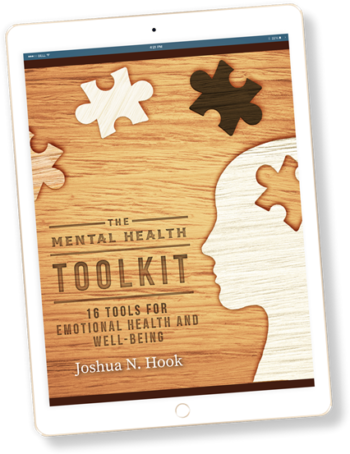What is the Function of Your Behavior?
July 11, 2018
Categories: Behavior
Often when we’re trying to solve a problem in our lives, we focus on our behavior. At face value, this makes a lot of sense. Behavior is powerful and important. If we want something different to happen in our lives, we need to make concrete changes in our day-to-day actions and behaviors.
Sometimes it can be helpful, however, to look deeper than the content of our behavior (i.e., what we are doing or not doing). I’ve been getting into something called Acceptance and Commitment Therapy (ACT), and one key area of emphasis is to look at the function of your behavior.
Content vs. Function
What’s the difference between the content of your behavior and the function of your behavior? The content of your behavior is what you probably think about when you think about behavior. The content of your behavior just describes the behavior—what are you doing. For example, this morning I woke up and completed a workout at my CrossFit gym. That’s the content of my behavior—I exercised for one hour.
The function of your behavior asks a different sort of question: What did the behavior do for me? What did it accomplish in my life? What underlying need did the behavior meet? One behavior (i.e., exercise for one hour) might have all sorts of functions. It might be a step toward a particular goal (e.g., getting in shape or losing weight). It might make me feel better about myself. It might help control or remove unpleasant thoughts or feelings (e.g., reduce anxiety, protect against fear of gaining weight). The function of your behavior is unique and will depend on the person and context.
Healthy vs. Unhealthy Functions
A behavior can have a healthy or unhealthy function. In general, a behavior serves a healthy function when it moves you in the direction of your core values. Values are patterns of action that move you toward what is truly important to you. On the other hand, a behavior serves an unhealthy function when it moves you in the direction of experiential avoidance. Experiential avoidance occurs when you try to avoid or control unpleasant thoughts, feelings, or bodily sensations.
Don’t Miss the Function
If you only focus on the content of your behavior, you miss out on important information that can help you live better. Let’s go back to the exercise example. If I just focused on the content of my behavior, I might say something like, “Exercise is good” and not think about my behavior any further.
But what is the function of my exercise? The function could be healthy. For example, I have a value of living a healthy lifestyle, and exercise could move me in the direction of that core value. However, the function could also be unhealthy and move me in the direction of experiential avoidance. For example, at times in my life, I have felt badly about myself for how I looked. Exercise was a way for me to avoid feeling badly about myself, because in my mind, I told myself that I was “on the road to looking good.” If I don’t consider the function of my behavior, I miss out on this important learning experience.
Discussion: Think about a behavior that you are engaging in. What is the content of your behavior? Spend some time describing it. Next, let’s think about the behavior in a deeper way. What is the function of your behavior? Does it move you in the direction of your core values? Or does it move you in the direction of experiential avoidance?

Related Thoughts

Subscribe To My Newsletter
Join my mailing list to receive the latest blog posts.
Receive my e-book “The Mental Health Toolkit” for free when you subscribe.

